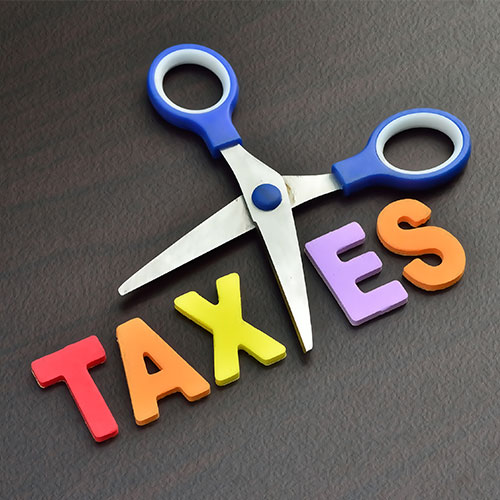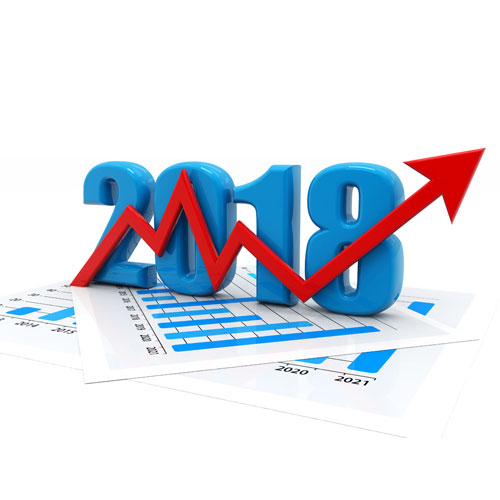Friday, Jan 12 2018
Source/Contribution by : NJ Publications
Retirement period is considered to be a new beginning for an individual. It is the time to unwind and pursue hobbies which you were not able to pursue due to lack of time during your working life.
Your post retirement period can be the most relaxing period of life after long working years, but also on the other hand, it will be a period when fresh income will stop and you will have to manage with whatever retirement corpus and/or pension you receive. With higher life expectancy, increasing cost of medical treatment and double digit inflation, life looks more challenging for a retired individual.
With urban Indian, the biggest challenge of retirement life is perhaps increasing life expectancy with advancement of medical treatment but coupled with rising medical costs and with private employment & lesser possibility of employer sponsored pension, we all may need to fund around 25 years of retired life from our own savings if we consider retirement age at 60 and life expectancy of around 85.
Interest earnings from debt / small savings have been the traditional source of income for retired individuals. Looking at the bigger picture, we find that typically, interest rates are high in underdeveloped and developing economies but in developed economies, they are relatively very low. Prudent economics encourage the government to bring interest rates down or aligned with market rates for government sponsored saving schemes like PPF, Postal Schemes etc. We have already seen a declining trend over the past decade in such products. With falling interest rate scenario, only debt retirement portfolio will not generate return sufficient to meet rising expenses during retirement period of 20-25 years. This leaves very little option for a retired individual to look for in terms of investment instruments which can generate inflation beating return.
Inflation: The crux of the problem
During working life, the inflation effect more or less get nullified as your income grows faster or in line with inflation rate but during retirement, inflation eats into your savings as you stop generating additional income. With stagnant and/or slow moving pension, inflation greatly increases the gap between expenses and cash inflow during retirement. This becomes very critical when we consider extended periods of retirement of over 20-25 years. So it becomes imperative that your portfolio fulfills either of the 2 conditions in face of rising expenses and falling interest rates:
- Your retirement corpus or any post retirement portfolio be of such huge size that all future expenses can be managed by earnings and withdrawals.
- Your planning focuses on both current earnings and also future growth of portfolio. Here you would need to generate inflation beating returns.
The Bucket Idea:
 We can represent the entire portfolio planning exercise in a simplistic bucket concept. The simple rules of this idea are…
We can represent the entire portfolio planning exercise in a simplistic bucket concept. The simple rules of this idea are…
- Each bucket represents a different need/objective and aims to fulfill the same and one should evaluate it according to its objective
- One should not compare returns from each bucket in the same time frame as buckets would be for different time frames
- The buckets must consider your entire portfolio in all asset classes. Remember to plan your buckets with your financial adviser with proper disclosures.
Just to briefly state at the beginning, there are different baskets and you must choose baskets as per your own objectives and needs. To begin with, let us ignore the size of the basket as it would be explained later.
- Bucket 1: For emergency funds / short-term expenses /planned medical expenses
- Bucket 2: For generating earnings/income for meeting expenses – either by pure earnings or with capital withdrawals as option in rare cases
- Bucket 3: For ensuring portfolio growth and ensuring total ‘value’ of portfolio is kept intact even after inflation
- Bucket 4: For generating good wealth in long to very long term
Now we begin choosing the buckets, one at a time. Remember, that estimating the need and size of the bucket will eventually be the outcome of a thorough financial /portfolio planning with your adviser…
Bucket 1:
This is essentially your emergency fund for meeting any medical emergency or for upcoming /planned medical treatments, etc. The emergency fund should also cover your upcoming expenses for few months, say 3 at least, at all times. The emergency fund can be kept in bank or in cash though it is recommended that you keep only limited amount in cash if access to bank / ATM is convenient.
Bucket 2:
This bucket essentially is for generating returns /cash inflow for meeting your expenses. The objective here is to have regular flow of income ensured through interest earnings for the next 3-5 years at the upper end without facing any return/income fluctuations. This bucket is most important and must remain with you always such that projected cash inflow is always assured first.
Over the time, this bucket will lose value due to inflation and withdrawals, if any planned. With rising expenses, this bucket may need replenishment from time to time. Capital withdrawals should be avoided as far as possible especially if you are in the beginning years of retirement. Meeting expenses by withdrawals is recommended only when you are in later years of retirement / very old age as it comes at the cost of sacrificing future earnings.
On the other hand, in cases where there is good retirement kitty available, there can be a surplus cash generated over expenses. It is highly recommended to make proper use of this surplus and put it preferably in bucket 3 or 2, as may be required. Money can be withdrawn manually and with mutual funds, you can opt for Systematic Withdrawal Plans or SWPs with set frequency and amount.
Typically, fixed/regular interest paying debt instruments can be a part of this portfolio. It will predominantly be a debt portfolio and may comprise of PPF, Bank FD, NCD, Post Office Senior Citizen Savings Schemes, etc. In most cases, the size of this bucket would be the largest. Debt mutual funds are a very good match for bucket 2 as they offer great choice, comfort, features, liquidity, convenience and taxation advantages without any additional risks. There are products to match any investment horizon and one can choose from a wide variety of products to build a smart portfolio in debt mutual funds.
Bucket 3:
This bucket is for replenishing and/or generating additional value to your portfolio. The idea is to not let your total portfolio value decrease but grow especially in the beginning to middle years of your retirement period. You must gain more in long term in bucket 3 from what you lose on bucket 1 or 2 in terms of ‘real value’ after accounting for inflation. The size of this bucket would perhaps be the largest at beginning of retirement when you should plan for 20+ years of retirement ahead of you and start decreasing when you approach old age.
Typically balance funds or preferably diversified equity mutual funds can easily be put into this bucket. You can also add some component of gold here. With a horizon of 5+ years horizon at the minimum, this bucket should ideally create inflation beating returns.
Putting regular surplus savings, if any, into bucket 3 is a very good option as wealth can be generated without any big portfolio risk or volatility. Doing a mutual fund equity SIP from any surplus earnings from bucket 2 can be a very smart idea. One can also plan for Systematic Transfer Plan or STP from bucket 2 to bucket 3 using mutual fund products in both. An STP has similar advantages as SIP with difference that it is from an MF fund to an MF fund while in SIP it is cash being invested.
Equity is something that has the potential to deliver superior returns to inflation but only in long run. Exposure should be taken after your needs are safe bucket 1 and 2. Further, one must not lose sleep by seeing volatility in bucket 3 and if you are the one to loose sleep/ grow impatient due to market fluctuations, perhaps it would be wise to instead opt for peace and avoid investing in bucket 3.
As the idea is to also replenish bucket 2 by using bucket 3, one can shift money at regular intervals with adequate surplus value being realized. This can be an outcome of what the financial advisers often term as ‘portfolio rebalancing’. The quantum of withdrawal should be limited to matching the real value of bucket 2 and that which is essential to fulfill the objective of bucket 2.
Bucket 4:
Having the bucket 4 is purely optional. This is a purely aggressive asset class portfolio with clear objective of capital growth in long to very long term, say 8+ years at minimum. This bucket makes sense to be chosen only at the beginning years of the retirement and it is something that the retiree feels free to forget and not use any time soon. We are planning for a long retirement so having this basket does carry some sense.
Diversified equity mutual funds, mid-cap / small-cap equity funds, etc. can be kept in this bucket. One can again have the option of investing small lump-sum at retirement and/or preferably start an SIP or an STP from bucket 2. At regular intervals after say 5-6 years, one can start shifting money /appreciation from this bucket to your bucket 2. The size of the bucket would obviously be small and smaller than bucket 2 and 3. Further, this bucket is not recommended in old age.
Total Retirement Portfolio:
One can have any desired combination of buckets but the popular options can be as given below. The actual size and quantum of money can be determined only after proper financial planning / asset allocation exercise.
- Bucket 1 and 2: An extra safe option but comes at sacrifice of real value of portfolio. In future, earnings from portfolio may not be adequate to meet rising expenses. Recommended when you have a very comfortable retirement kitty or other source of income /support
- Bucket 1, 2 and 3: A balanced portfolio that has some scope for preservation / growth of assets to compensate fall in real value. Generally recommended for all who do not have a very comfortable retirement kitty and have to rely on portfolio for meeting needs even in older age
- Bucket 1, 2, 3 & 4: An aggressive portfolio. Recommended only if you do not have any sufficient retirement kitty and need to have good portfolio growth in long term to meet expenses in older age. Growth must never be opted at the cost of earnings safety in foreseeable future.
 |
Bucket 1 : 5-20% exposure
Products: Cash / Bank Balance / Liquid mutual funds
Horizon: Immediate / very short-term / short-term |
 |
Bucket 2: 20-60% exposure
Products: Debt mutual funds / Bank F.D. / small savings schemes
Horizon: short to medium term (<5 years) |
 |
Bucket 3: 10-40% exposure
Products: Balance funds, diversified equity funds, Gold
Horizon: long (5-10 years) |
 |
Bucket 4: 0-20% exposure
Products: Aggressive equity mutual funds / direct equity
Horizon: long to very term (>8 years) |
Buckets & funds summary
- Retirement kitty can be well invested in buckets 1, 2 & 3.
- Regular expenses / medical costs, etc. can be met from Bucket 1 & Bucket 2
- Filling Bucket 3 from Bucket 2: Investing any surplus earnings, SIP or by STP
- Replenishing Bucket 2 from Bucket 3/ 4: By STP / Switch / shift at regular intervals over time
The Asset Allocation:
A popular perception is that post retirement, we must keep all assets safely into debt. Though this is actually a sound theory, it does lack in addressing the bigger problems it might generate in long term. The idea must always be to do a thorough financial planning exercise to estimate the real needs and then define a proper portfolio with sound asset allocation into multiple asset classes like equity, debt, cash and physical assets during retirement years. The equity component has strong applications and can be effectively used to make your retirement planning more long term sustainable and rewarding.
Typically, the asset allocation would be skewed towards debt. The physical assets like gold would be optional for diversification and inflation hedge in medium to long term. The equity part would be for meeting growth objective over a long term since the expected post retirement period can extend 20-25-30+ years. The long term returns potential of equity has often been talked about here and the SIP route definitely adds extra safety and comfort into the asset. Thus, when it comes to portfolio planning post retirement, one must at least consider multiple asset classes and take exposure with proper planning as per the need.
Going beyond portfolio & buckets !!
- If you have not yet retired, try to get yourself health / medical insurance as soon as possible
- It is recommended that you keep all valuables /jewelery safe / in custody especially if staying alone. Take extra care of your physical security.
- One can enjoy retired life only if he/she is healthy and fit. Maintaining a good lifestyle with diet/yoga/walks/exercises can keep you fit and healthy and also keep those frequent medical bills away.
- One can look for extra income by way of paying guests / rent of property
- Reverse mortgage can be looked at in absence of any financial support/income if you do not wish or need to give ownership of property to any dependents after you in inheritance
Summary:
Every individual who is retired or is approaching retirement, would seek a steady income flow post retirement to meet expenses. With expected long retirement years, it becomes a challenge and hence the traditional way of thinking has to be changed and an active portfolio management with focus on both safety and future needs has to be considered. There is now less risk that can be taken compared to the accumulation phase to provide a greater sense of certainty that assets will continue to support a comfortable retirement. However, at the same time, there has to be some capital preservation and growth over the time, to ensure that income streams keep pace with the rising cost of living. Such objectives can be conflicting, with higher levels and a trade-off between returns and risk has to be made. The Bucket concept is nothing but a simplistic representation of building a smart portfolio post retirement.
After years of working hard we should all not shy away from retirement but accept it as a fact of life and the dawn of the golden years of your life with immense possibilities. One can seek many pursuits in life and be more socially, politically or spiritually active in life. In this phase of life, money carries less significance in life but even then it forms a critical aspect as one has to meet the basic needs and be self reliant in leading a dignified life. Irrespective of what age one is, retirement planning is very critical and the early you begin, the more comfortable and peaceful your retired life can be. We wish and sincerely hope that every one of us enjoys a healthy and peaceful retirement.



 We can represent the entire portfolio planning exercise in a simplistic bucket concept. The simple rules of this idea are…
We can represent the entire portfolio planning exercise in a simplistic bucket concept. The simple rules of this idea are…






